Dim Tweets You've Already Seen With This Browser Extension
Twitter’s insistence on showing tweets out of order has been a long-running complaint. Sure, there’s a setting that claims to show your feed in chrono

Most people buy a wireless charger for one reason, and that reason is the convenience of placing a device on a circular pad (or a stand, or whatever) to restore its battery. No more power bricks. No more cables. No more rebuying cables because they have frayed and broken after six months of repeated plugging and unplugging. People want a pad that charges their device; they don’t want a hassle.
So why does Apple make wireless charging so confusing?
If you’re not up to date on the nuances of wireless charging performance, the simple truth is that—right now, at least—it offers a slower experience than you can get using a cable.
For example, Apple’s new MagSafe charger can charge up your MagSafe-friendly iPhone 12, iPhone 12 Pro, or iPhone 12 Pro Max at 15W. But that’s only if you’ve connected it to Apple’s new 20W power adapter. If you care about raw speeds, you’re better off just plugging your iPhone 12 directly into the power adapter (using a USB-C to Lightning cable) or using one of Apple’s bulkier MacBook power adapters that can charge at a much higher rate.
(If that sounds confusing, don’t even get me started about quirks with charging MacBooks.)
One thing I’ll say up front: You don’t need to buy an expensive MacBook charger to power up your iPhone. Just use what you have (or whatever you can source for cheap), as even the 61W MacBook power adapter is overkill for your iPhone’s needs.
Mixing-and-matching Apple’s MagSafe charger with a different power adapter that’s rated for a higher wattage won’t work, either. As PCWorld recently showed, you’ll still get bumped back to 12W even if you’ve connected the MagSafe charger to, say, Apple’s 60W MacBook charger.
The real-world difference between all these wireless charging rates is almost negligible. You’ll probably only lose a few minutes’ time whether you’re wirelessly charging at 12W or 15W (or even 17W, as PCWorld measured when using the Apple’s 20W power adapter with its MagSafe charger).
That’s also why I’m not especially bothered that the iPhone 12 Mini maxes out at 12W on the MagSafe charger instead of the theoretical 15W that other iPhone 12s can attain; it’s not that big of a deal in the end. The point is more that charging—wired or wireless—is still a big pain in the ass to think through if you simply favor performance above all else. (And I’d still rather use MagSafe, which gets you up to 12-15W, than a standard Qi wireless charger that tops out at a measly 7.5W.)

As the Wall Street Journal observed, Apple’s MagSafe charger performs much better than a 7.5W wireless charger. However, plugging your iPhone into the 20W charger you should be using with MagSafe saves you nearly half the charging time to get to half-full. Depending on the test, the differences can be even more dramatic:
Charging via MagSafe is convenient and all, sure, but if you’re in a pinch, leave it behind and go right for the cable.
I love my wireless charging pads, but that’s only because my iPhone spends most of its life sitting on my desk or nightstand—such is the reality of the great quarantine. At $40, or double the price of a pretty great aftermarket charger, Apple’s MagSafe charger is reasonably priced for what it offers. Pay twice as much; charge (not quite) twice as fast.

The price of Apple’s MagSafe Duo Charger, however, is fucking bananas. It sells for a jaw-dropping $130, which gets you a ho-hum wireless charger for your iPhone connected to a wireless charger for your Apple Watch. If you buy this thing, you deserve to feel bad about your purchase for months afterward.
Remember, MagSafe is still in its infancy; there will be plenty of other MagSafe chargers that look cooler, function better, and cost less. Second, you’re paying more than $100 dollars to attach two chargers at the hip. There’s no reason for it.
A more reasonable approach is to slap your regular Apple Watch charger into one of these $11 stands. Then buy a vanilla MagSafe charger (if you must) and you’ll still be $80 ahead of the game. Or get a regular ol’ dual-stand charger for your iPhone and Apple Watch. If you need a quick charge, plug a cable into your iPhone. It’ll go juice up faster via that method than using even the best MagSafe charger you can buy. Otherwise, who cares if an iPhone takes some extra time to charge when it’s just sitting on a stand for hours?
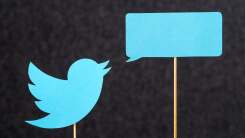
Twitter’s insistence on showing tweets out of order has been a long-running complaint. Sure, there’s a setting that claims to show your feed in chrono
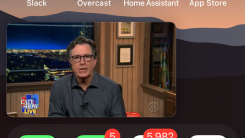
YouTube previously blocked the quirky hack that lets you stream its content using iOS 14's picture-in-picture capabilities for free. For unknown reaso
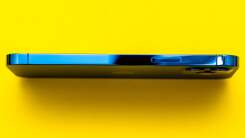
Get the coffee on standby, preorders for Apple’s final two iPhone 12 models kick off Friday morning at 5 a.m. PT. Even though the iPhones on sale are
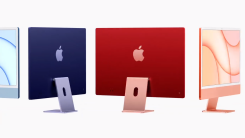
Apple recently unveiled its M1 iMac models for 2021. The new desktop computers come in a variety of joyful hues: blue, green, orange, pink, purple, ye

“Find and Replace” is one of the most fun tools for getting data organized, fixed, and in whatever final state you need, and our friends over at How-T

If remote work has taught us anything, it’s that many of our meetings are unnecessary and overly complicated, especially if teams are spread across ti

Butt-dials can range from slightly embarrassing experience to downright mortifying, but they are, at least, blessedly rare. Unless you have multiple c
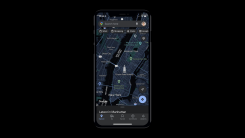
Daylight Saving Time is over; darkness now descends upon the Earth every day at 5 p.m. You stumble to your car, turn on the ignition, and fire up Goog
We are a comprehensive and trusted information platform dedicated to delivering high-quality content across a wide range of topics, including society, technology, business, health, culture, and entertainment.
From breaking news to in-depth reports, we adhere to the principles of accuracy and diverse perspectives, helping readers find clarity and reliability in today’s fast-paced information landscape.
Our goal is to be a dependable source of knowledge for every reader—making information not only accessible but truly trustworthy. Looking ahead, we will continue to enhance our content and services, connecting the world and delivering value.